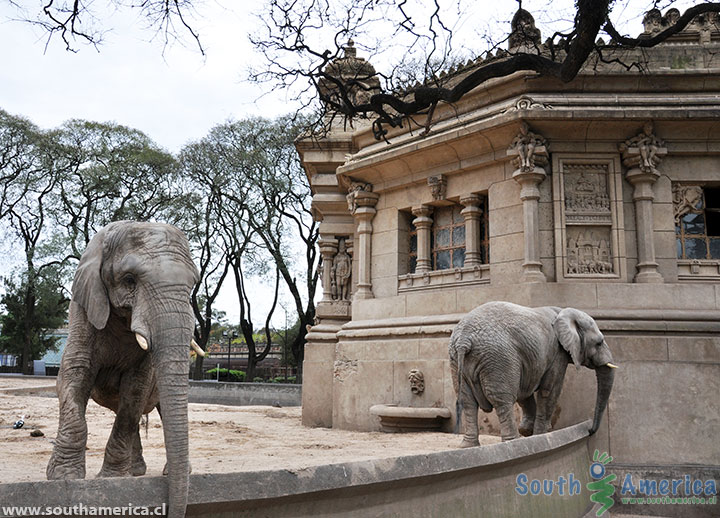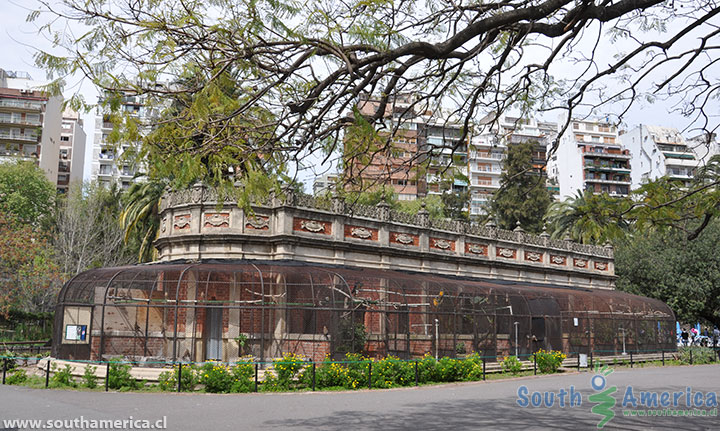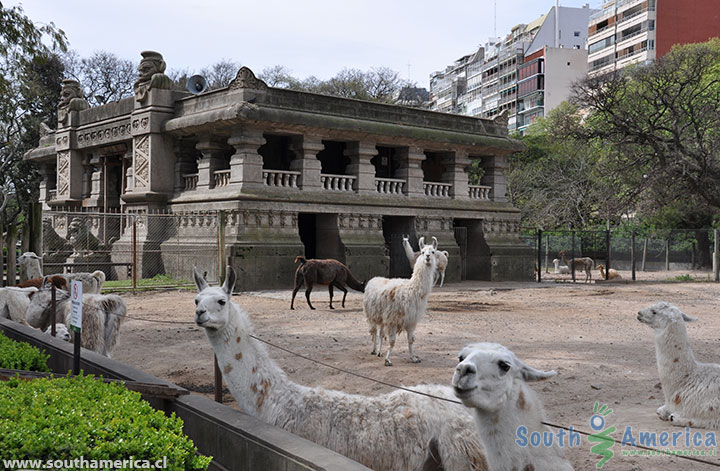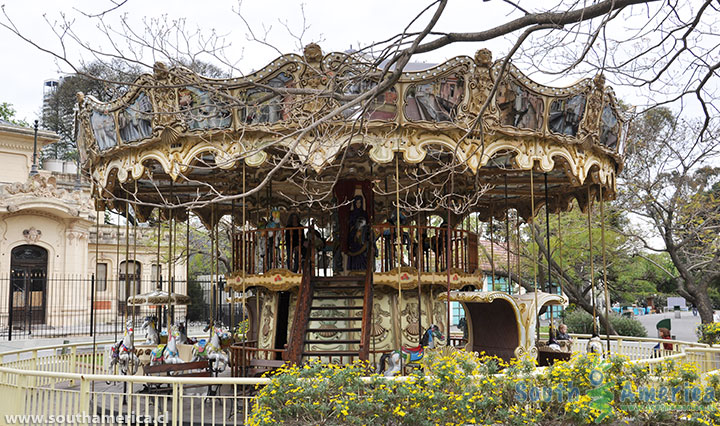Buenos Aires Zoo
Argentina

Before you get all excited about seeing some amazing animals, the Buenos Aires Zoo closed in 2016 ... as in, the animals have now gone and it is no longer open to the public. :(
I decided to leave this information here as a reminder of what it was like. We were lucky to visit just months before its closure.
Since 1888 the Buenos Aires Zoo has been entertaining kids and adults alike. It is situated in the Palermo neighbourhood of Buenos Aires.
You will find the classic lions, hippos, monkeys, bears and giraffes on display as but with an additional local flavour (condors, tapirs etc). However, one of the reasons that makes the Buenos Aires Zoo a little different, and more interesting, are the old buildings and housing for the animals, some that are over 100 years old. Some of the old buildings of note are:
The Bear House: Built in 1897 in a medieval gothic style, the building no longer houses bears but has a subtropical rainforest with many different species. On the ground just in front of the building's main entrance look out for the engraved images of different types of bears.
The Pagoda: This Japenese style pagoda originally housed deer from Japan though now has Chinese pandas.
Vesta Temple:Donated by Italy and built in an ancient Roman style in 1909, this building was originally a place where women at the time would breastfeed with the help of nurses. Nowadays it is used as the Zoo's library.
The Egyptian Pavilion: This consists of the Egyptian Pavilion and three buildings housing the monkeys and some birds.
The Hindu Palace: Built in 1904 to look like a Hindu palace, this building currently houses the elephants.
The Hindu Temple: Built in 1901 in a Hindustani style, the building currently has llamas and other South American camelids.
The Parrot Pavilion: Built in 1901 this pavilion now houses monkeys as well as parrots.
The Deer Chalet: Neo-gothic building from the beginning of last century and now houses the large American bisons instead of deer.
The Condor Cage: Originally a decorative part of Plaza de Mayo during "Fiestas Mayas" celebrations in 1903 and then brought to the zoo to house condors and eagles.
The Giraffe House: Built in the style of an 18th Century North-African muslim building, it houses the giraffes.
The Russian Pavilion: Built in a medieval style, this building now houses the hippos

Main Attractions
Apart from the animals, there are 4 main attractions as a part of the Zoo.
Aquarium: See Sharks, stingrays and even live piranhas. There are also penguins and sea lions.
Boat Ride: On the zoo's Burmeister Lake where you can watch the Lemurs living on an island in the middle of the lake from close up.
Aviary: One of the oldest buildings of the zoo has now become a rainforest containing colourful Argentinean and South American birds.
Reptile House: Snakes and Lizards and all things Reptilean.

Opening Hours
The Buenos Aires Zoo has officially closed!
The zoo USED To be Open: Tuesday to Sunday (closed on Monday)
10am - 6pm (Tickets can only be bought until 5pm)
Prices - Entrance Fee
Children under 12 were FREE (need to provide evidence of age)

How to get to the Buenos Aires Zoo
The easiest way is to take the Subte (subway) to Plaza Italia. The main entrance is just across the road on the corner of Av. Las Heras and Av Sarmiento though on the weekend, holidays and during school holidays, a second entrance is open at the other end of the zoo on the corner of Av. Libertador and Av. Sarmiento.
If you have time, you might want to check out Parque Tres de Febrero (park) near the Buenos Aires Zoo.
If you found this guide about the Buenos Aires Zoo interesting or useful, let others know about it.




